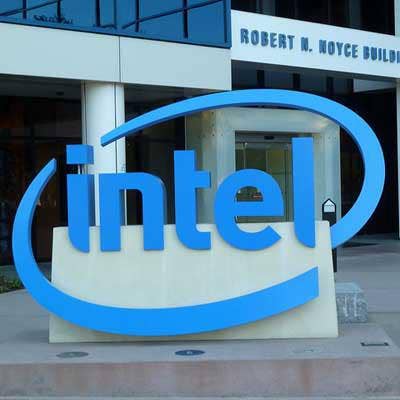Intel Stock Sinks As Data Center Growth Shrinks

Intel's stock price declined more than 6 percent in after-hours trading Wednesday night after the semiconductor giant's projected revenue for 2019 fell short of Wall Street's expectations.
In its earnings report on Thursday, Intel said it expects 2019 revenue to reach $71.5 billion, a roughly 1 percent increase from 2018 and below the $73.1 billion estimate made by Wall Street analysts. The company said it also expects a slow first quarter, driven in part by an expectation that its data-centric businesses, which includes data center and memory products, will contract in the low double digits for the first three months of the year.
The Santa Clara, Calif.-based company also cited ongoing trade tensions and other macroeconomic concerns, as well as a deterioration in pricing for NAND memory products, in its assessment for how it will perform in 2019.
[Related: AMD: 7nm Ryzen's CES Debut Just The Start Of New Fight Against Intel]
"Our outlook is a little more cautious than we thought it would be a few months ago," said Bob Swan, Intel's CFO and interim CEO, during the earnings call.
The retreat of growth in Intel's data-centric businesses, which began in in the fourth quarter of 2018, comes as the company has been transforming itself into a firm focused on data, not just PCs.
The slowdown was most notable in the Data Center Group, the company's largest revenue driver outside of its PC business, which like Intel's data-centric businesses overall, only grew 9 percent year-over-year to $6.1 billion in Q4, a retreat from several quarters of double-digit growth.
Swan, who told analysts he expects Intel’s board to pick a new CEO soon , said that the slow Data Center Group growth is the result of lower demand from cloud service providers and Chinese customers. Still, cloud service providers continued to drive the business unit's growth with a 24 percent increase from the same period last year.
Swan said cloud customers, who rely on Intel's Xeon processors to deliver cloud services for a variety of use cases, made most of their purchases in the first nine months of 2018 and that he expects the business to ramp up again in the second half of 2019.
While communications service providers also pushed double-digit growth, Intel's data center sales from enterprise and government customers, who use Xeon processes for on-premises server, were down 5 percent year-over-year.
"We're not really counting on it for growth," Swan said of enterprise customers.
The interim CEO said he still considered it a strong quarter of growth for Intel's Data Center Group because previous quarters of higher sales growth made it a tough comparison. Swan added that the company sees continued demand for workloads to handle large volumes of data.
"We're as excited about the future as we have been," he said.
Asked by an analyst if Intel is prepared for increased competition without mentioning rival AMD by name, Swan said he expects "competition to be stronger" this year but added that the company has figured its plans to fight back in its 2019 revenue forecast.
"We're investing to protect our position on the data center and PC side," he said.
Despite the reaction from Wall Street, Patrick Moorhead, president and principal analyst of Moor Insights, saw the data center news as a temporary issue.
"I'm not concerned long-term as Intel has new [10-nanometer] designs coming online, and I think the cloud numbers are a momentary blip," he said in a message to CRN.
Intel finished 2018 with $70.8 billion in revenue, a 13 percent increase from 2017. Meanwhile, the company's net earnings were $4.58 per share. In Q4 of last year, the company closed with $18.7 billion, a 9 percent increase from the same period last year and under Wall Street's expectations by $360 million. Net earnings were $1.28 per share, exceeding analyst estimates by 6 cents.
The company's memory business was its fastest-growing division in 2018, bringing in $4.3 billion, a 22 percent increase from the previous year. And while the Data Center Group has begun to slow, it was the second fastest-growing unit, increasing 21 percent year-over-year to $23 billion. The Internet of Things Group and Intel's PC business both grew 9 percent to $3.5 billion and $37 billion, respectively. The Programmable Solutions Group, on the other hand, grew 12 percent to $2.1 billion.